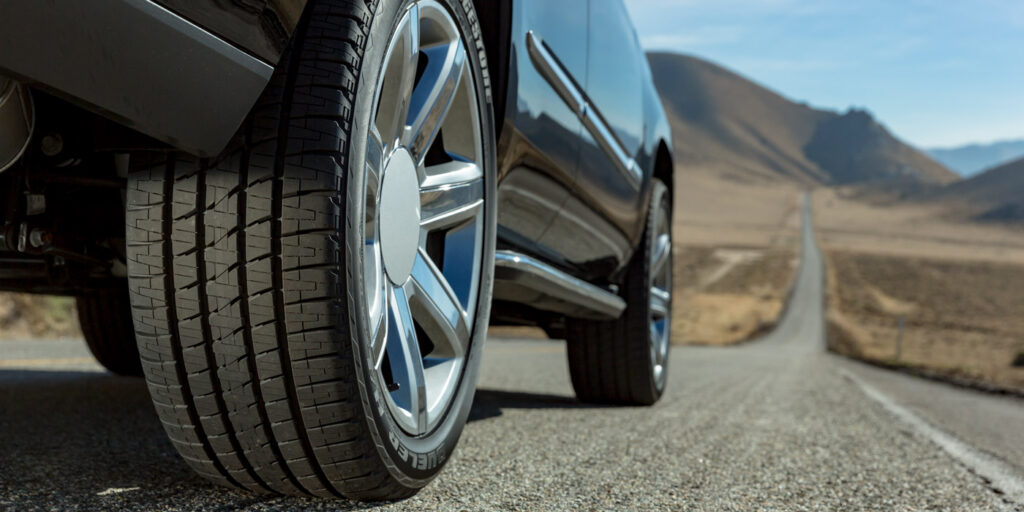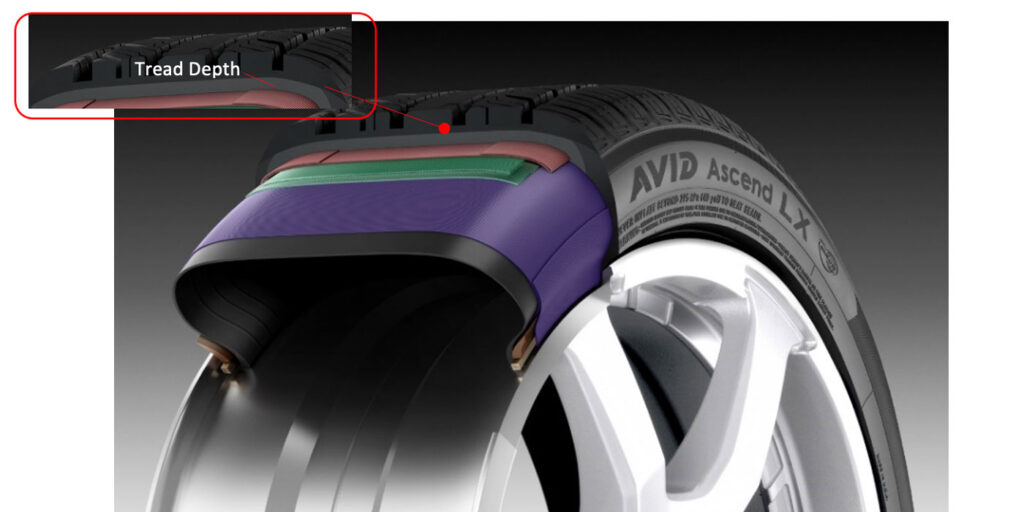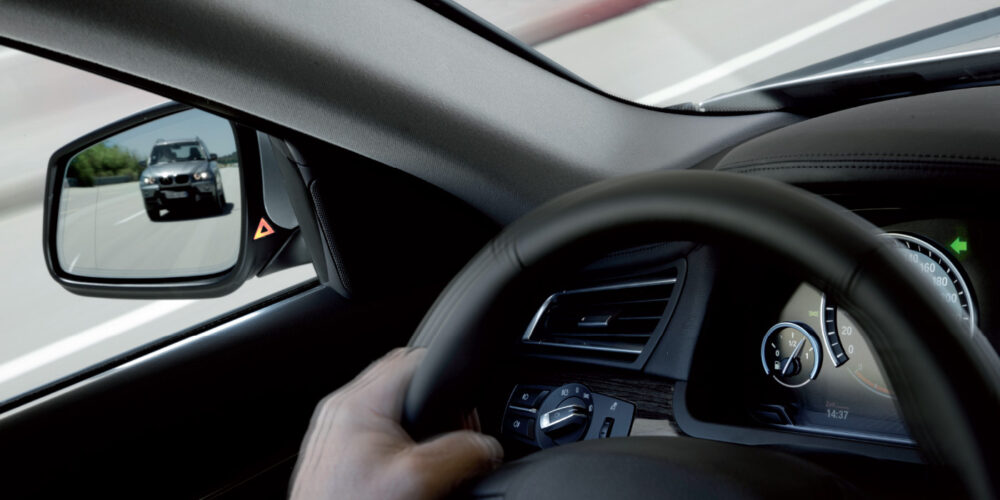We are almost through another year of “The Science Behind” series, and would like to finish with an article about tread depth. As we all know, when tires run, they lose tread depth and losing the tread depth will change tire performance. If we could find a way to not lose the tread depth, we would be in a much better situation, but unfortunately, that is the nature of rubber in connection to the road!
Tread Depth
For consumers, tread depth is the vertical distance between the top of the tread block to deepest area of tread (which is called the tire’s grooves, channels or tread void). The tread depth can be different depending on what grooves are being measured.
Generally, the center of a tire has the deepest tread depth and the shoulder has the lowest. Depending on the application and engineering requirements of the tire, its tread depth can be the same across the tire tread. Tire manufacturers generally list the tread depth at its deepest in their spec books.
Figure 1 shows the tread depth definition on a typical passenger tire.
Tread Depth and Performance
It’s easy to think more tread depth is better for tires—they will have more rubber, and therefore, last longer. While this may be true in some aspects of performance, it may not be true in others. As we said before, tire design is an act of balance: improving one performance aspect often results in the degradation of another. Table 1 shows tire performance in regard to increased tread depth.
Tread Depth, Endurance & High Speed
In the tire world, we often discuss the effect of tires on braking, ride, handling and wear performance, but we rarely discuss endurance and high-speed performance expectations. A tire needs to withstand running for a very long time in a harsh environment, often at high speed. Additional rubber (tread depth), especially on the shoulder area, makes the tire run at a higher temperature as the heat transfer rate from inside to outside will be decreased. Higher temperature will reduce the endurance and high-speed performance of the tire.
That is one of the reasons tire engineers implement different construction concepts for higher tread depth tires (i.e., light truck tires). This is also why tires with deeper tread depth often have a lower speed symbol compared to ultra-high-performance tires with a lower tread depth.
Tread Depth & Wear
This one should be easy: The more tread on the center and shoulder, the longer a tire lasts. However, the balance between tread depth in the center and shoulder is extremely important. The wrong ratio of tread depth between the center and shoulder may cause irregular wear.
Tread Depth & Rolling Resistance
To ensure very good rolling resistance performance, a tire needs to generate a minimum amount of heat and friction and have an excellent heat transfer capability.
None of this can be achieved with additional tread depth. More rubber in a tire simply means more heat generation, higher friction and less heat dissipation. That’s why increasing tread depth–especially in the shoulder – increases rolling resistance, which results in lower fuel efficiency. While the technology on tread compounds in recent years have reduced the deficit of increasing the tread depth, the challenge of rolling resistance improvement on higher depth tires still exists. That’s why tires with higher tread depth (i.e., light truck tires) have higher rolling resistance compared with lower tread depth tire (i.e., passenger car tires).
Tread Depth & Traction
More tread depth means more tread block movement, and that means lower dry braking performance. The best dry braking tires are slick tires. That’s why Formula 1 race cars run on slick tires in dry conditions. However, the same disadvantage can be an advantage in snow and wet conditions. Increased tread depth often increases water evacuation in wet conditions and increases tire-biting edges in snow conditions. Depending on what type of traction performance is the priority of tire engineers, the tread depth should be adjusted.
Tread Depth, Ride, Comfort and Handling
This is another easy one: More tread depth means more cushion between the road and passenger and gets us closer to the goal of better ride and comfort. However, oftentimes this means less control of the vehicle – in other words, less handling.
Tread Depth Maintenance
As tread depth affects nearly all tire performance, it becomes obvious why tire manufacturers and dealerships are very sensitive to customer awareness of their tire tread depth, as well as their tire rotation routine.
When vehicles are equipped with new tires, all corners of the vehicle should have the same tread depth. In perfect load, suspension and road conditions, all tires should wear out at the same rate and then be replaced together. However, real life driving is far from perfect. Vehicle load, road conditions and suspension are constantly changing, and therefore, tires wear out at different rates. Due to suspension changes and/or misalignment, one (or more) tire(s) may wear differently on the center and shoulder. As you saw in Table 1, tire performance significantly changes based on different tread depth levels.
A vehicle with different tire performances in each corner is not the safest vehicle on the road. By checking tread depth regularly and rotating the tires now and then, the tires will be closer to unified performances, including longer wear.
Final Thoughts
With tread depth affecting nearly every performance of tires, there’s no surprise why tread depth is the most talked about tire topic. That’s why tire engineers will continue to challenge themselves daily to make tires safer, faster, more comfortable and last longer while optimizing the tread depth of the tire.
This article first appeared in Tire Review.















